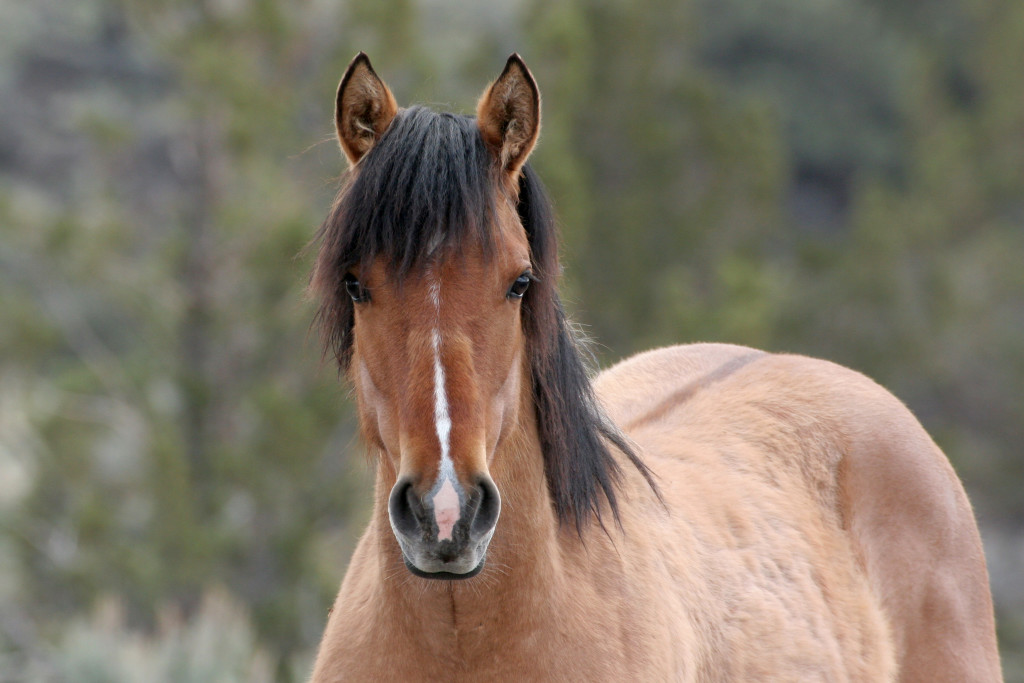The mustangs of Steens Mountain in southeast Oregon are wild, free-roaming feral horses. They are referred to as “feral” since they originated from domesticated horses. The story of wild mustangs in the northern foothills of Steens Mountain is unique because their isolation has kept the genetic makeup of the herds very near to the DNA of the early Spaniards’ herds. These are called the Kiger mustangs.
 One wild horse I photographed on the southern loop of the Steens was very close to me. It shows many traits of the Kiger mustang: a dorsal stripe down its back, buffy inner-ear hairs with black outlined ears, bi-color and a bi-directional mane and a few other traits not visible in this photo. Many horses in the herd photos I shot show some of these Kiger mustang traits, others do not.
One wild horse I photographed on the southern loop of the Steens was very close to me. It shows many traits of the Kiger mustang: a dorsal stripe down its back, buffy inner-ear hairs with black outlined ears, bi-color and a bi-directional mane and a few other traits not visible in this photo. Many horses in the herd photos I shot show some of these Kiger mustang traits, others do not.
In April, I located two herds of mustangs. Knowing these herds sometimes travel broadly, it was very fortunate to find them within range of a camera lens. I had time, focus, adequate light and co-operative animals. The results are presented in a slideshow that you can view here. You will see horses with Kiger mustang markings, Indian pony “paints” and stock horse traits from herds released by ranchers in the early 1900’s. (This happened all over the American West when horse mounted cavalries were replaced by motorized vehicles to mobilize troops during WWI.) All of the herds of Steens Mountain have reverted to a totally wild state through generations spent adapting to America’s Great Basin.
Maintaining wild horses in wild places is controversial. In some places, they have over-populated the landscape trampling and destroying water sources and depleting forage for wildlife. It is a fact that their natural predators (grizzlies, cougars and wolves) are limited, so expansion of herds is unchecked without human intervention. To limit their numbers, herds are managed (through adoption programs, birth control methods and other programs) by the Bureau of Land Management. Some naturalists believe they should not be present in wilderness areas, others believe they should be reintroduced because the ancient horse once roamed here. Whatever one’s bias, it is hard to argue against the reality that these are wild behaving, strikingly beautiful and highly spirited animals that capture the imaginations and admiration of people all over the world.